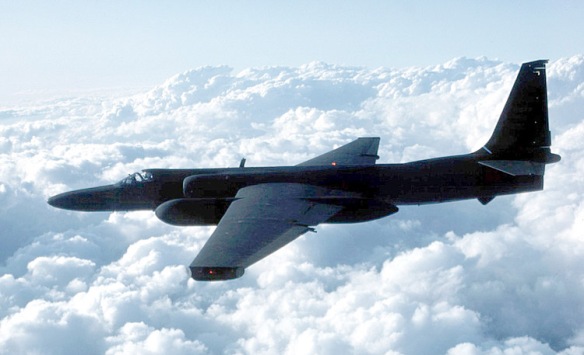U-2S New redesignation for the TR-1A; updated with a General Electric F118 engine, improved sensors, and addition of a GPS receiver; 31 converted. The U-2 remains in front-line service more than 50 years after its first flight despite the advent of surveillance satellites. This is due primarily to its ability to direct flights to objectives at short notice, something that satellites cannot do. The U-2 has outlasted its Mach 3 SR-71 replacement, which was retired in 1998.
One of the less visible forms of foreign military presence, also one which involves movable and transitory presences, is that of aircraft overflight privileges. It is a form of external access.
This occasionally crucial matter of aircraft overflight privileges involves a complex range of practices and traditions, some of which were, in an overall sense, altered by time in an era of increasingly “total” warfare, diplomacy and ideological rivalries. In parallel with – and closely bound up with – what has been wrought by nations’ increasing insistence upon extension of sovereign control further outward from coastlines (now more or less institutionalized by 200-mile Exclusive Economic Zones – EEZs), the trend here during the Cold War was towards tightened restrictions on overflights.
In the past – and in some cases continuing to the present – some nations have allowed others more or less full, unhindered and continuous overflight rights (perhaps involving only pro forma short-term notices, i. e., filing of flight plans). In other cases, however, where political relations are weaker or not based on alliances, ad hoc, formal applications for permission to overfly must be made well ahead of time, which may or may not be granted depending upon the purpose and situation, be it routine or crisis.
It is to be stressed that the day-to-day diplomacy of overflight rights is a very closed and obscure matter, albeit of often crucial importance. We have little data – the subject periodically emerges to prominence during crises such as the 1986 U. S. raid on Libya. Of course, it is precisely when urgent military operations are involved that the subject acquires the most importance.
Nowadays, of course, well past the introduction of radar and its widespread global distribution, few overflights can be made on a covert basis, as was common before World War II, when detection depended primarily on visual observation from the ground. Not only “host nation” radar, but now also the superpowers’ satellite reconnaissance makes such “covert” activities almost impossible, particularly if a small nation has access to information from one of the superpowers, be it on a regular or ad hoc basis. This in turn may have had important ramifications for intra-Third World rivalries, specifically, regarding the balance of diplomatic leverage involved. Nations inclined, for instance, to provide overflight rights in connection with a U. S. airlift to Israel knew that Soviet satellite reconnaissance would provide information about that to Arab governments. That was a powerful deterrent.
Some overflights were made without permission (as with the respective use by the United States and the USSR of U-2 and MiG-25 reconnaissance flights), overtly or with a tacit or resigned wink by the overflown nation. Often a nation whose airspace is violated will not openly complain for fear of international or domestic embarrassment over its impotence, or untoward diplomatic repercussions with a strong power. Hence, the USSR is thought to have overflown Egypt and Sudan, among others, without permission in supplying arms to Ethiopia during the 1977-1978 Horn War, earlier, its MiG-25 and Tu-95 reconnaissance aircraft apparently flew with impunity over Iran’s airspace. The United States is thought to have threatened overflights in some places for future arms resupply of Israel, if it should be utterly necessary.
More recently during the Gulf War, and the Afghan and Iraq wars, this became a big issue in numerous places. During the Gulf War, the U. S. and its allies were allowed overhead access almost everywhere, including ex-Warsaw Pact states in Eastern Europe. In the Afghan war, the U. S. had good overhead access all over Europe, in the Caucasus and Central Asia and in and around the Persian Gulf excepting, of course, Iraq and Iran. Pakistan, politically cross-pressured, allowed U. S. overflights by bombers coming from Diego Garcia and from aircraft carriers stationed in the Arabian Sea. During the Iraq war, however, the U. S. did have some problems with Switzerland, Syria and Iran.
